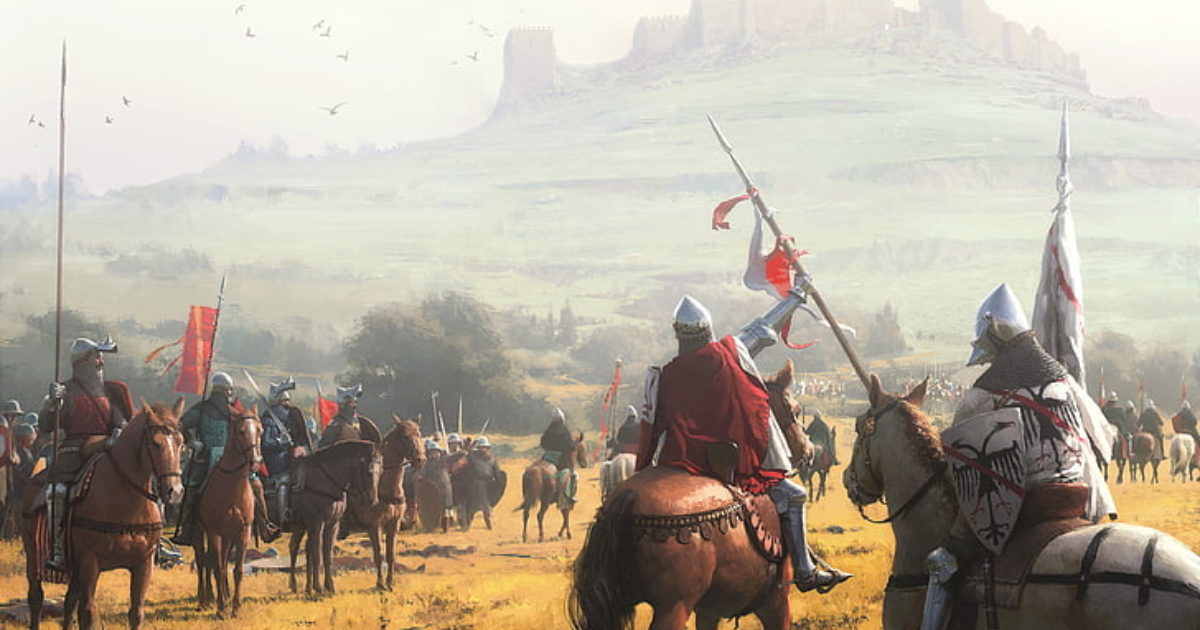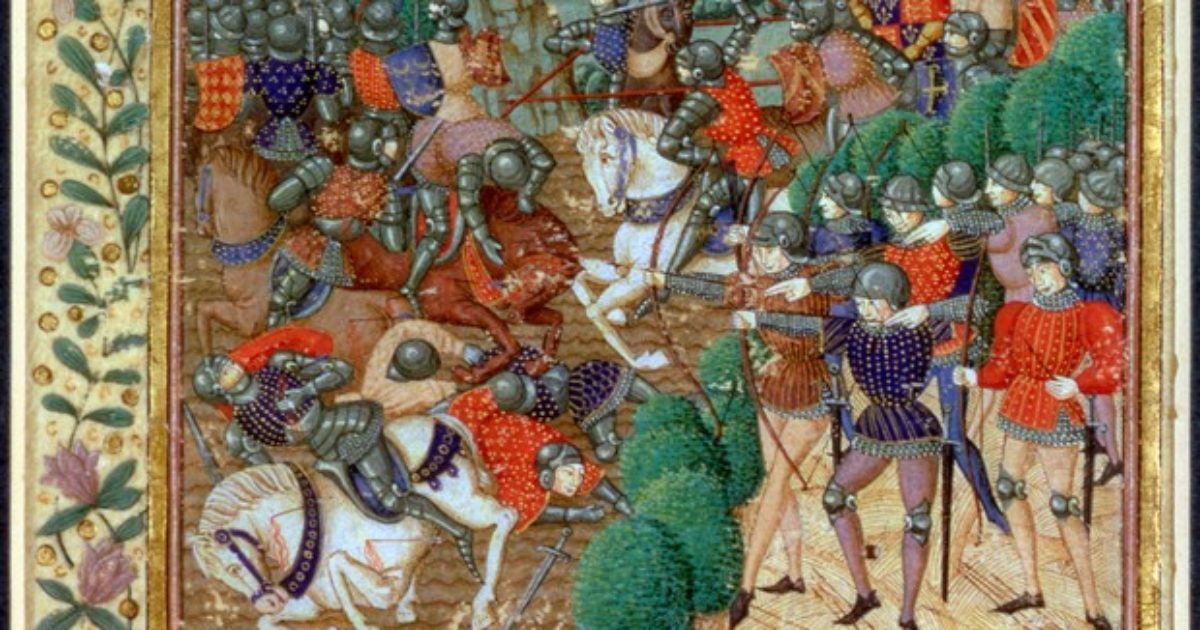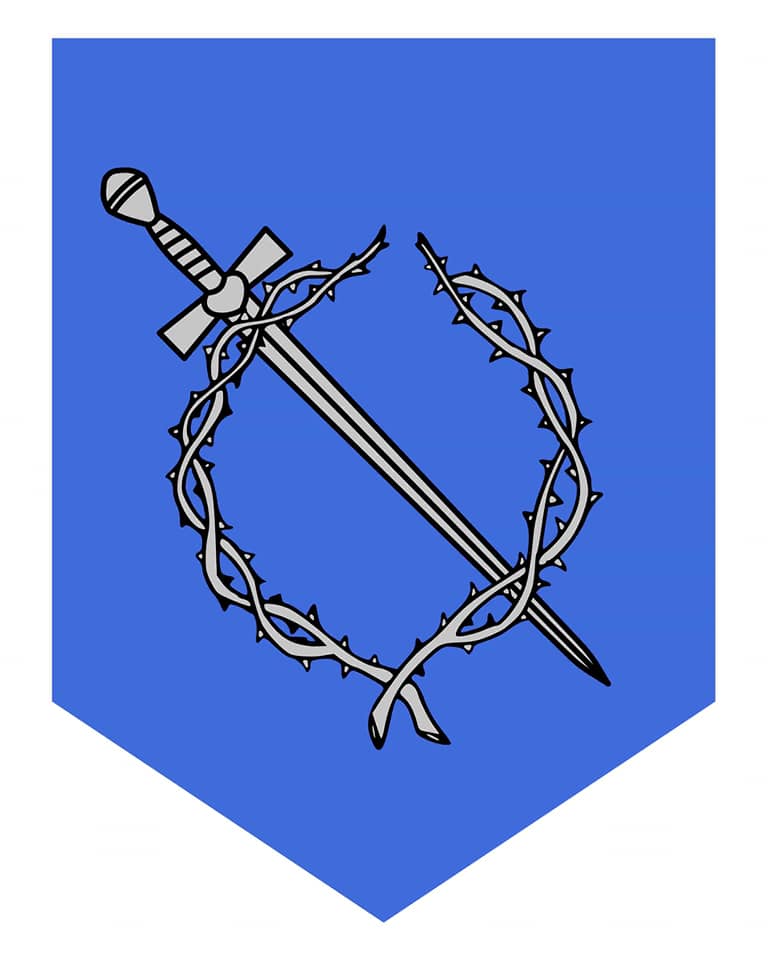
Longsword: Beginner Course (Iron Thorn Manual 1st Edition)
The longsword was developed around the 15th century while the Arming Sword/War Sword (the traditional one handed medieval sword) was being phased out. The longsword style of fencing was popularized in the German states, and later was used throughout Europe. The Longsword (contrary to media and popular belief) is a two handed sword often seen as somewhere in between a normal greatsword and Arming Sword. It could be wielded one handed if needed, but only on horseback. Included with longsword is the Bastard Sword (also known as a Hand-and-Half Sword). In comparison to the Longsword, the Bastard Sword has a shorter handle, and a slightly shorter blade, allowing it to be balanced better than the longsword for wielding one-handed.
The Swords
The Longsword is the traditional sword for Longsword Fencing (as the name suggests). Though more appropriately used two-handed, it can also be wielded one-handed if needed. It has a specific blade and handle length. The Bastard Sword (Hand-and-Half Sword) has a shorter handle and blade in comparison to the Longsword allowing easier balance for wielding one-handed, but again is better and more appropriate two-handed (see figures).
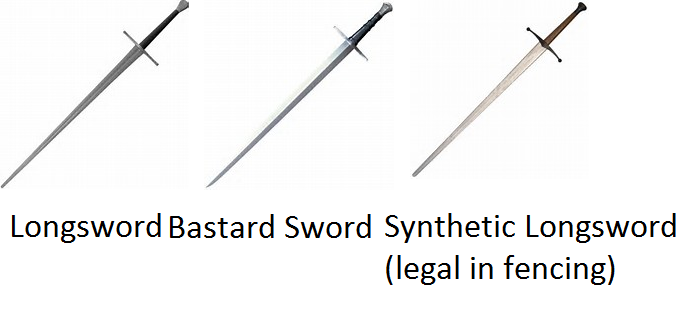
Four Levels of Importance
- Safety-With a contact sport, one must maintain safety in order to keep people from severe injury or death.
- Honor-The game does not work without fencers acknowledging shots. And proclaiming if a shot was bad.
- Attitude-Without an attitude of fun, the game is no longer fun for you or those around you, maintain a good attitude, and if you find yourself getting frustrated, leave the fight and calm down.
- Skill-One should always seek to practice and hone their skills.
Protective Gear
As with all contact fencing sports, longsword has its own protective gear. As a longsword fencer you should find your protective gear for your own safety and wellbeing. Below is a list of required and recommended protective gear.
- Required
- Protective Mask (Including back of head protection)
- Padded or armored gloves
- Elbow Pads
- Knee Pads
- Forearm Protection
- Gorget that also protects the collarbone
- Recommended
- Padded chest protection
- Shin Protection
The Stance
Unlike most fencing styles, Longsword’s stances are relatively interchangeable, though the typical stance is having the foot same as your fighting hand forward, while the opposite foot behind you. However, if you wish to alternate your stance for the fight, you can stand with your opposite leg leading, while your fighting leg follows. With the guards, this mirrors the guard. There are five basic guards in Longsword: Middle, High, Low, Hanging, and Back. Middle guard is the most basic, in middle guard the sword is stretch forward, both arms should be relaxed and the blade should angle slightly across your body (see figures 1 and 2). High Guard, the sword should be raised above your head with a slight angle behind you allowing for a downward strike (See Figures 1 and 3). In Low Guard the blade is forward and down allowing for upward strikes, also at a slight angle (see figures 1 and 4). In Back Guard the hilt is held to your side with the blade behind you, allowing for diagonal strikes (see figures 1 and 5). Finally, in Hanging Guard the sword is held just above the forehead to the side with the blade hanging down across the face and upper body (see figures 1 and 6).
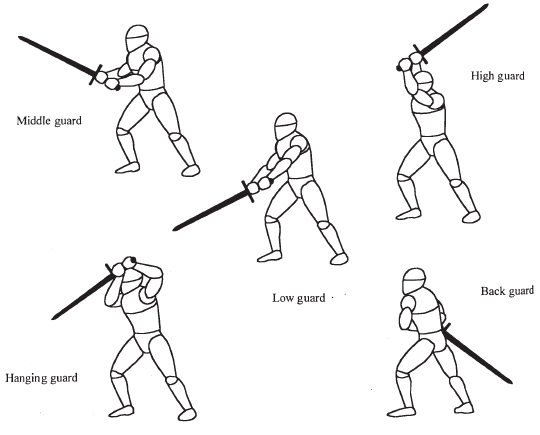
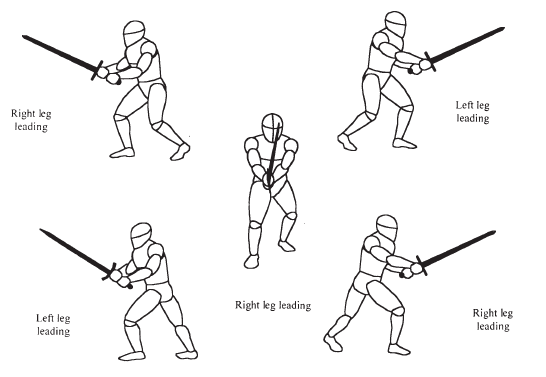
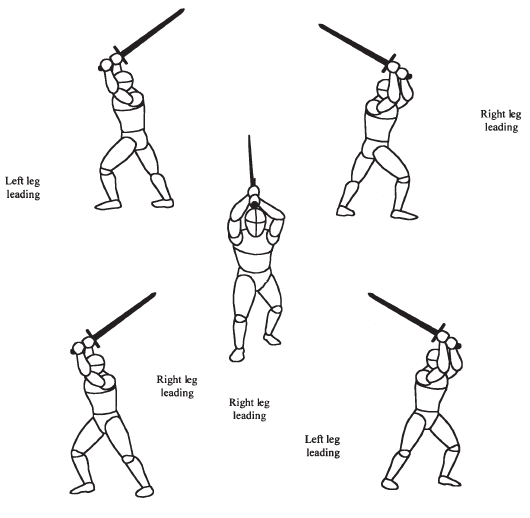
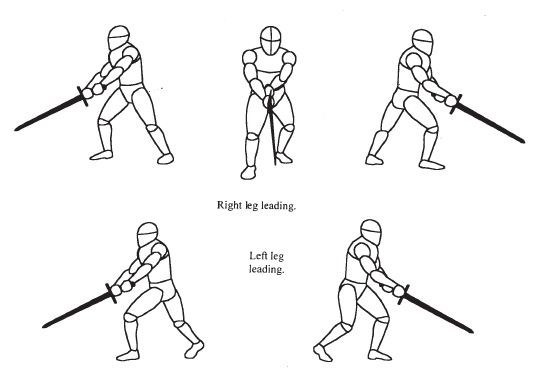
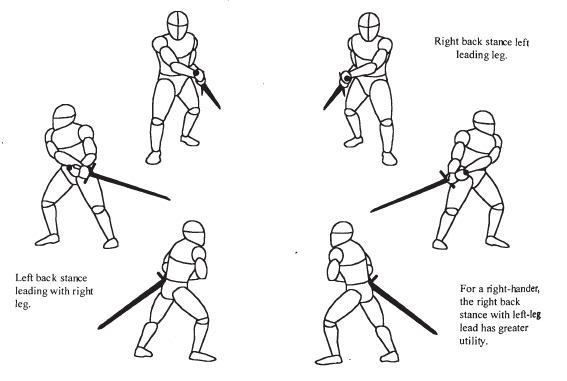
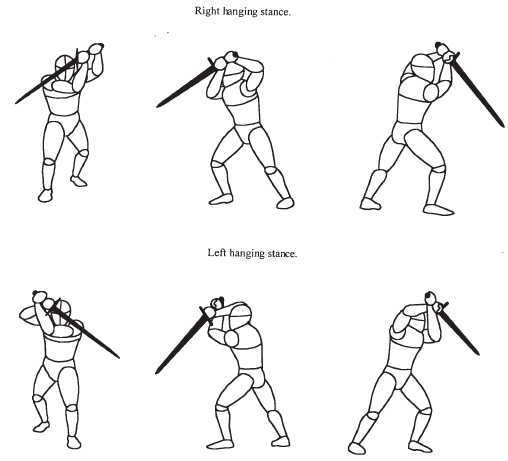
Holding the Sword
Proper grip of the Longsword is with your lead hand or fighting hand on top and flush with the crossguard, while your opposite hand is held on the bottom, being flush with your leading hand or with a small gap between hands depending on the length of the handle and shape of the pommel. The crossguard may be fingered if there are protective pieces on the crossguard for the finger (See figures).

Parts of the Blade
The blade of a sword in sword and shield consists of the Shoulder, Center, and Tip. The Shoulder is the stronger part towards the hand and if one needs to parry with the sword, it is the preferred part. The Tip is the weaker part of the blade more towards the tip, and is best used for attacks and cuts (see figure).

Attacks
In Longsword, typically an attack ends into one of the five basic stances allowing for another attack to begin from that stance. All attacks go across the body, and a proper follow through attack is included with the body stepping and turning into the attack. The attack should be a strong attack, if parried however, follow through into your next guard and attack again (see figures).

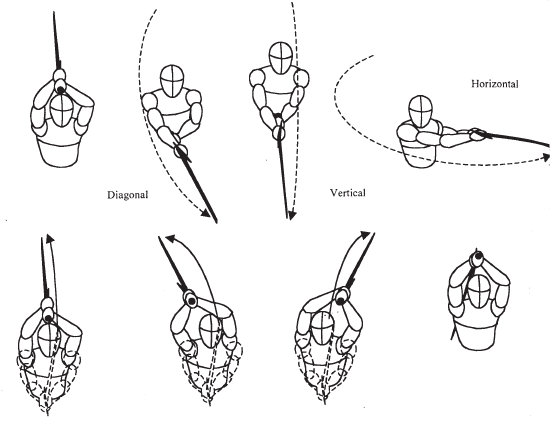
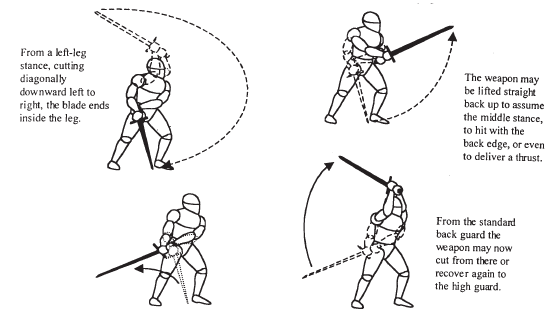
Parries
In Longsword, parrying is a block and guide essentially. When blocking, allow your opponent’s blade to slide down yours and when you are free, strike back at your opponent and follow through (see figures).

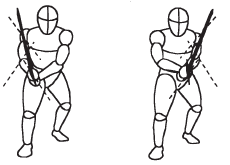

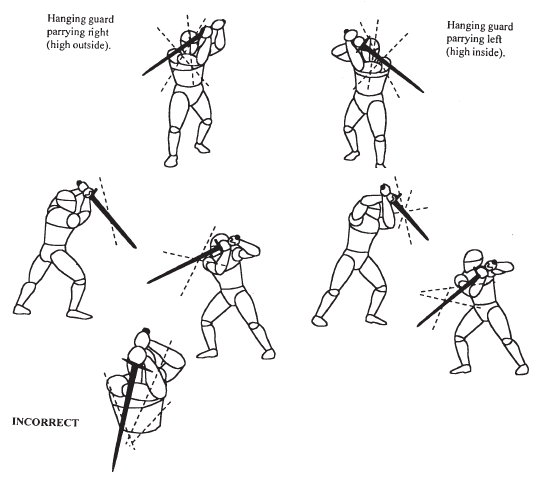
Binding
In Longsword a common tactic and occurrence is what is known as binding. Binding is when blades become locked together through the strength of on fighter or both. As a beginner, you might think that the best way around a bind is to use your strength to gain advantage, while this can lead to a win in the round, the best ways to break out of a bind is to wind your blade, or simply disengage (see figures).

